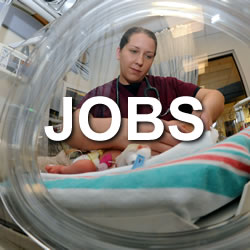Medical Errors: Are We in Safe Hands?
The HWN Team | Insider

image by: Anna Shvets
Medical mistakes happen. Medical professionals are only humans who can err. One gets to wonder how many medical misadventures go unreported!
Medical mistakes are usually something that people associate with health care in developing and low-income countries where they lack the right infrastructure and trained personnel. The fact is, a lot of medical mix ups and mistakes in hospitals and clinics occur all over the world, including Europe and North America.1
In medical terms, medical mistakes are called iatrogenic events, defined as unintended harm or suffering caused by health care. The industry classifies medical errors into three broad categories.
Adverse Drug Events (ADEs)
ADEs or medication mix ups are probably the most common reported medical mistakes. One of the most well-publicized medication mix ups was the case of Quaid twins Thomas and Zoe who received the wrong dose of heparin by mistake. The newborn babies were reportedly given an excessive dose of the blood thinner heparin which was up to 1,000 times the normally prescribed dose. Fortunately, the error was detected early enough so that the Quaid twins, plus several other babies, could be saved.
A study conducted in a clinic in France revealed that in the period January and September 2005, 267 cases of iatrogenic events happened to 116 newborn babies. The numbers indicated that a baby can suffer from more than one medical error. Here is a summary of the medical mistakes reported:
- 34% were preventable.
- 29% were severe.
- 2 cases were fatal.
- 34 cases were due to drugs.
- 19 cases were identified as medical errors
The study concluded that iatrogenic events occur frequently and are often serious in neonates, especially in infants of low birthweight. Improved knowledge of the incidence and characteristics of iatrogenic events, and continuous monitoring could help to improve quality of health care for this vulnerable population.2
A study in the U.S. revealed the following figures:3
- For every 100 children hospitalized, 11 drug-related mistakes can occur.
- About 500,000 children suffer from drug mix ups.
- Less than 4% of medical mix ups are reported.
Drug mix ups however, aren’t restricted to children alone. According to the 1991 Harvard Medical Practice Study, there is a 6.5% rate of ADEs among adult inpatients, 33% of which were considered preventable.4 And one must not forget that there are other adverse events besides drugs, such as excessive radiation exposure.
Hospital-Acquired Infections (HAIs)
Hospitals are not the cleanest of environments and all are actually the breeding ground for dangerous bugs. All too often, patients get the so-called Hospital-Acquired Infection (HAI) also known as nosocomial infection or healthcare-associated infections. HAIs "encompass almost all clinically evident infections that do not originate from a patient's original admitting diagnosis".5
About 100,000 people die of HAIs due to antibiotic-resistant bacteria. In the U.S. the incidence of HAIs exceeds 2 million cases a year and an estimated expenditure of more than $4.5 billion is attributed to HAIs. Most HAIs are detected 48 hours after admission to the hospital.
In a survey of patients from pediatric ICU between 1992 and 1997, bacterial and fungal infections were reported as follows:6
- Bloodstream infections - 28%
- Ventilator-associated pneumonia - 21%
- Urinary tract infection (UTI) - 15%
- Lower respiratory infection - 12%
- Gastrointestinal, skin, soft tissue, and cardiovascular infections - 10%
- Surgical-site infections - 7%
- Ear, nose, and throat infections - 7%
HAIs cannot be fully attributed to mistakes made by health professionals but hospital staff can be instrumental in preventing them.7
Risk factors for HAIs can be grouped into 3 categories, namely:
Iatrogenic risk factors include pathogens on the hands of medical personnel, invasive procedures (eg, intubation and extended ventilation, indwelling vascular lines, urine catheterization), and antibiotic use and prophylaxis.
Organizational risk factors include contaminated air-conditioning systems, contaminated water systems, and staffing and physical layout of the facility (eg, nurse-to-patient ratio, open beds close together). Some places in a hospital are more infectious than others. According to a 1986 to 1988 survey by the National Nosocomial Infections Surveillance (NNIS) System of the Centers for Disease Control and Prevention (CDC), the highest infection rates occur at the intensive care units, especially the burn ICU, the neonatal ICU, and the pediatric ICU. Newborn babies, especially those who are premature with low weight weights are more susceptible to HAIs.
Patient risk factors include the severity of illness, underlying immunocompromised state, and length of stay.
Surgical mistakes
And it is not just about leaving a surgical sponge inside a patient. Another high profile case was the open heart surgery of the comedian Dana Carvey in 1997. The procedure was supposed to treat a blocked artery but the surgeons apparently operated on the wrong artery. Carvey was awarded $7.5million in a malpractice suit.
The most frequent surgical mistakes are wrong site surgeries. In 2001, the Joint Commission documented 150 cases of wrong site, wrong person or wrong procedure surgery, of which:8
- 41% relate to orthopedic/podiatric surgery;
- 20% relate to general surgery;
- 14% to neurosurgery;
- 11% to urologic surgery;
- the remaining to dental/oral maxillofacial, cardiovascular-thoracic, ear-nose-throat, and ophthalmologic surgery.
- 58% of the cases occurred in either a hospital-based ambulatory surgery unit or freestanding ambulatory setting
- 29% occurring in the inpatient operating room
- 13% in other inpatient sites such as the Emergency Department or ICU
- 76% involved surgery on the wrong body part or site;
- 13% involved surgery on the wrong patient
- 11% involved the wrong surgical procedure.
A 2003 report which surveyed 1,165 hand surgeons showed:9
- 16% reported that they had prepared to operate on the wrong site but then noticed the error prior to the incision
- 21% reported performing wrong-site surgery at least once.
- One in 27,686 procedures was performed in the wrong site.
- The three most common locations of wrong-site surgery were the fingers, hands, and wrists.
- 9% of patients suffered from permanent disability
Why do medical errors continue to occur?
Overcrowded hospitals - Many hospitals, especially in large urban areas, are overcrowded and we are not even talking about the flu season, nevermind H1N1 or another pandemic. There are more patients than the hospital staff and hospital resources can handle. Because of overcrowding health professionals cannot spend enough time with patients. It's not uncommon for doctors to see between 30 to 40 patients a day.
Researchers at the Massachusetts General Hospital (MGH) and Brigham and Woman's Hospital (BWH) report that hospitals with high occupancy rates have increased workloads and higher patient-to-nurse ratios which are associated with increased incidence of adverse events. Adverse events were defined by the authors as „preventable injuries not resulting from patients' underlying medical condition".10
Overworked staff - Several studies have linked medical errors to long working hours and burnout especially among interns and residents. In December 2008, the Institute of Medicine released a report that proposed revisions to the duty hours and workload of medical residents.11
According to Michael M.E. Johns, chancellor, Emory University, Atlanta and chairman of the committee which prepare the report: "Fatigue, spotty supervision, and excessive workloads all create conditions that can put patients' safety at risk and undermine residents' ability to learn. Health care facilities can create safer conditions within the existing 80-hour limit by providing residents regular opportunities for sleep and limiting extended periods of work without rest. But these steps should be supplemented by additional efforts to improve patient safety and ensure residents get the full experience they need to safely and competently practice medicine at the end of their training.".
The report did not recommend the reduction of the 80-hour working week because it would most likely cost a lot of money and cause understaffing in hospitals. However, the proposed changes addressed the residents' workload, including the number of hours that residents can work without sleep (16 hours), more days off, and restrictions on moonlighting. Hopefully the changes will help to decrease the chances of fatigue-related medical errors and to enhance the learning environment for these doctors in training.
In another study, researchers at the Mayo Clinic reported that distress and fatigue among medical residents contribute greatly to medical errors. According to the authors: "We looked at distress and fatigue together and found that both factors can lead to a significant risk of medical error. Both fatigue and distress among medical residents represent a potential concern for patient safety“.12
Cost-cutting - The MGH-BWH study reported that efforts to meet two primary challenges facing hospitals today – reducing costs and improving patient safety – may work against each other. And cost cutting goes back to the first two factors discussed above. The researchers investigated four teaching hospitals for 12 months and found that one of the hospitals which has occupancy rates which exceeded 100% for 3 months had more adverse events than less crowded hospitals.
According to the lead author Dr. Joel Weissman "While financial and political pressures to make health care more efficient are leading to increased hospital occupancy and greater patient turnover, patients and policymakers are quite rightly demanding that health delivery systems be made safer. Our study suggests that pushing efficiency efforts to their limits could be a double-edged sword that may jeopardize patient safety."
So what's the health care industry doing to clean up its act?
In 1999, the Institute of Medicine released the groundbreaking report To Err is Human: Building a Safer Health System which documented that health care in the U.S. is not as safe as it should be. According to the report “Beyond their cost in human lives... errors…are costly in terms of loss of trust in the health care system by patients and diminished satisfaction by both patients and health professionals”.13
The good news is that awareness of medical errors has increased both among health providers and patients. Hospitals, medical professionals, advocacy and watchdog groups are making strides in improving the safety of health care.
Some notable efforts in the U.S. include: The Joint Commission , formerly known as the Joint Commission on Accreditation of Healthcare Organizations (JCAHO), is an independent, not-for-profit organization that grants accreditation to health care organizations including hospitals. It has launched a number of initiatives to address patient safety especially infection control in hospital settings.
The Agency for Healthcare Research and Quality (AHRQ) encourages patients to prevent medical errors by asking questions. In fact, it has produced several TV spots urging patients to "take charge of their health“ and ask questions just like they would ask questions about the food they order in a restaurant or the mobile phone they buy.14
In order to prevent medical errors, the AHRQ recommends asking your health care providers the following 10 questions:
- What is the test for?
- How many times have you done this?
- When will I get the results?
- Why do I need this surgery?
- Are there any alternatives to surgery?
- What are the possible complications?
- Which hospital is best for my needs?
- How do you spell the name of that drug?
- Are there any side effects?
- Will this medicine interact with medicines that I'm already taking?
The American Medical Student Association is actively campaigning for better and therefore safer working conditions for medical interns and residents.
The American Academy of Orthopaedic Surgeons (AAOS) launched the Sign Your Site Campaign to prevent wrong site surgery which includes three actions, a review of the operative procedure with the patient and operating room personnel prior to surgery , a review of the patient’s chart in the operating room prior to surgery, and writing your initials at the operative site… Sign Your Site.15
Since large number of victims of medical errors are children, researchers in a multi-center study have also developed a pediatric-focused tool that can easily and quickly detect medical errors by identifying "triggers“ in a pediatric patient’s chart.16
The Bottom Line
We have come a long way since the landmark 1999 Institute of Medicine report. But, we are not safe yet! Medical misadventures will continue to occur. We can only hope that with a concerted effort by the health care community and consumer organizations that the incidence will continue to decrease.
However, the obstacles remain formidable what with overcrowding, overworked staff and cost cutting. In the meantime, patients must be vigilant, ask questions and be their own advocate.
Published January 4, 2010, updated August 10, 2012
References
- Herper M et al, Scariest Hospital Risks, Forbes.com August 8, 2008
- Ligi I et al, Iatrogenic events in admitted neonates: a prospective cohort study, Lancet. 2008 Feb 2;371(9610):404-10
- Drug errors hurt 1 in 15 hospitalized kids, AP News, MSNBC, April 7, 2008
- Brennan TA et al, Incidence of adverse events and negligence in hospitalized patients, Results of the Harvard Medical Practice Study I: NEJM Volume 324:370-376 February 7, 1991 Number 6
- Nguyen QV, Hospital-Acquired Infections, Emedicine. Jan 14 2009
- Broaddus E et al, Hospital-Acquired Infections, Case Western Reserve University
- Collins AS, Chapter 41: Preventing Health Care–Associated Infections, Patient Safety and Quality: An Evidence-Based Handbook for Nurses, April 2008
- A follow-up review of wrong site surgery, The Joint Commission, Sentinel Event Issue 24 - December 5, 2001
- Meinberg EG et al, Incidence of wrong-site surgery among hand surgeons, J Bone Joint Surg Am. 2003 Feb;85-A(2):193-7
- Overcrowded hospitals may risk adverse events on busiest days, Eurekalert April 23, 2007
- Revised Hours and Workloads for Medical Residents Needed to Prevent Fatigue-Related Mistakes, But Altering Hours Alone No Guarantee of Patient Safety, National Academy of Sciences. Dec 2, 2008 Press Release
- Both Distress and Fatigue Impact Resident Physician Errors, Mayo Study Finds, Mayo Clinic September 22, 2009
- To err is human: Building a safer health system, Institute of Medicine IOM 1999
- Questions are the answers, AHRQ
- Wrong Site Surgery, American Academy of Orthopaedic Surgeons
- Takata GS et al, Development, Testing, and Findings of a Pediatric-Focused Trigger Tool to Identify Medication-Related Harm in US Children’s Hospitals, Pediatrics Vol. 121 No. 4 April 2008, pp. e927-e935

Introducing Stitches!
Your Path to Meaningful Connections in the World of Health and Medicine
Connect, Collaborate, and Engage!
Coming Soon - Stitches, the innovative chat app from the creators of HWN. Join meaningful conversations on health and medical topics. Share text, images, and videos seamlessly. Connect directly within HWN's topic pages and articles.
















